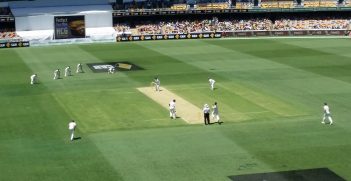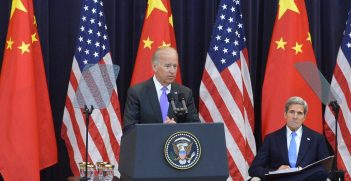Australia and the European Union: Beyond the Framework Treaty
Australia is pursuing significant trade agreements with its Asian neighbours under the mandate of ‘economic diplomacy’, yet is missing out on opportunities through not seeking a potential trade agreement with the EU.
Australia and the EU currently seek a closer relationship through the negotiation of a ‘Framework Treaty’ aimed at increased bilateral cooperation on a range of foreign and security policies, but the agreement stops short of specific commitments to expand two-way trade and investment.
This is curious, given the importance to Australia of its trade relationship with the EU and the fact that trade policy and trade negotiations are exclusive responsibilities of the EU institutions in Brussels. In contrast, ultimate responsibility for broader foreign policy rests with the individual member states of the EU.
The EU, comprised of 28 member states, is a trade superpower. It accounts for 25% of global GDP, has a population of 504 million people and constitutes the world’s largest trading entity with 34% of global goods and services trade. The EU occupies a key role among Australia’s commercial partners as its largest source of imports, its third-largest export market and its largest source of FDI.
Furthermore, the legacy of Australia’s economic reforms of the 1980s and 1990s, the creation of the Single European Market and reforms to the Common Agricultural Policy in the EU have created a more positive commercial environment between Australia and Europe, especially in services and manufactures trade and in investment. Importantly, agriculture is no longer the source of constant bilateral friction that it was in the past.
Australia Needs New Eurovision
When Australia’s current government took office in September 2013, Foreign Affairs Minister Julie Bishop stated that Australia would put ‘economic diplomacy’ at the centre of its foreign policy. It gave Trade Minister Andrew Robb a mandate to focus on conducting free trade agreements (FTAs) with China, Japan and South Korea.
These countries are important trading partners for Australia. FTA negotiations with Korea were successfully concluded in December 2013. However, Australia’s new economic diplomacy needs to accord a higher priority to business relations with what is arguably its biggest partner in foreign trade and investment; the EU.
The time has come to move economic diplomacy up a notch with a full-fledged Australia-EU FTA. Without it, Australia risks losing out on new trade and investment opportunities with the EU.
Also, the EU has embarked on a program of negotiating ‘new generation’ FTAs. Their aim is to seek trade liberalisation not only of border trade measures such as tariffs, but also behind-the-border non-tariff measures, mainly regulatory barriers to trade.
Such barriers are the key impediment to the liberalisation of trade in services and are increasingly restricting trade in manufactures, food and agricultural products, as well as investment and public procurement. The EU concluded its first ‘new generation’ FTA with South Korea in 2009. It subsequently embarked on FTA negotiations with Canada, Singapore, India, Malaysia, Japan, and the US. The EU has now either negotiated, or is negotiating, FTAs with most of Australia’s major OECD trading partners outside Europe.
The European Union: The Missing Piece in Australia’s FTA Policy
While multilateral trade liberalisation through the WTO remains Australia’s preferred option, the failure of the Doha negotiations to yield significant results; despite limited steps forward at the Bali WTO Ministerial meeting in December 2013, means that Australian has quickened the pace of its FTA policy. Australia negotiated FTAs with New Zealand, Singapore, Thailand, the US, Chile, ASEAN, Malaysia and South Korea. Bilateral FTA negotiations are currently underway with China, Japan, India and Indonesia. Australia is also very actively involved in the plurilateral Trans Pacific Partnership (TPP) and Regional Comprehensive Economic Partnership (RCEP) negotiations. The only major trading partner with whom Australia still has not opened FTA negotiations is the EU.
The ‘Comprehensive Economic and Trade Agreement’ (CETA) that Canada agreed with the EU on 18 October 2013 offers relevant parallels for Australia and the EU. Both Australia and Canada are mid-ranking, highly developed countries. The size of their economies and their dependence on the EU for trade and investment are broadly comparable.
Canada and Australia share with the EU comparable systems of regulatory values, objectives and governance. Like Canada, Australia has a federal system with the sub-federal governments exercising comparable levels of domestic regulatory authority, such as in relation to services, setting product standards and public procurement.
The ‘new generation’ CETA agreement with Canada provides a comparable example and perhaps even a model for Australia to follow. The time is right for Australia to step up its economic diplomacy with the EU. Australia gains little in continuing to cruise along on its current track, at the risk of losing out on new trade and investment opportunities with the EU.
Donald Kenyon and Pierre van der Engare Associate Professors at, respectively, the Centre for European Studies and the Crawford School of Public Policy, Australian National University.
The above is an edited abstract of an article published in the Australian Journal of International Affairs.




